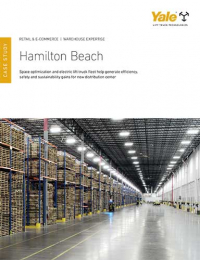Ocean Pricing: The tide is turning
This new generation of buyers and analysts will have more visibility into not only their own order status, but also to a rapidly evolving marketplace and the forces that are making an impact on costs and services globally.

Shippers are witnessing a substantial change in the ocean cargo market. In fact, we’ve been on a path that’s been affected by four major trends for nearly a decade, meaning that a new generation of shippers and third parties are entering a market that’s vastly different from the last century.
This new generation of buyers and analysts will have more visibility into not only their own order status, but also to a rapidly evolving marketplace and the forces that are making an impact on costs and services globally. They will also see costs rise above the rate of inflation as we’re seeing in the post-consolidation parcel, air and rail industries.
In addition to the tactical factors of schedule, fuel and container availability, these four trends are affecting where shippers can get quotes and are making an impact on the service and cost metrics needed to successfully buy and sell products globally.
While over capacity has held costs down for several years, the investments being made in people, processes and technologies are beginning to pay off for providers as the global market improves. Shippers will do well to pay attention to these four vectors in ocean cargo:
Capacity expansion. The three major alliances in 2017 will be 2M + Hyundai, The Alliance and Ocean Alliance. These three alliances will control more than 90% of the trans-Pacific trade and 96% of Asia-Europe trade, according to C.H. Robinson, a major broker. The effect is to provide more tightly controlled capacity by optimizing each of the partners’ load factors on voyages.
Further, C.H. Robinson estimates that about two million TEUs will be added during the 2016 and 2017 operating years, while about 600,000 TEUs will be scrapped. The net increase would seem to suggest a continued soft market, however industry consolidation means tighter price control. A good example has been the parcel carriers and railroads, which now constitute an oligarchy—ocean carriers seem to have watched and learned.
Consolidation and joint marketing. Not only do we constantly read about capacity sharing between carriers, but perhaps as important are new mega-deals with large shippers. Alibaba, Amazon, Cosco and Walmart are working deals with large service providers such as Maersk Lines to improve cost and reliability of service by reserving space in such volumes that the carrier can reduce risk, and therefore cost, as they are assured their fixed expenses for operations are covered in the critical east-west sea lanes by their largest customers. Small shippers then get the last few spots at a premium—think about how the airlines sell last minute seats.
Technology. Upgrades in ocean-going technology include new forms of propulsion for ships, greater TEU load-planning capability with increased visibility at the item level, as well as optimization tools to improve fuel use, productivity and turn times at the ports of call. Pricing optimization for carriers is a direct output of these tools.
Infrastructure investments. From new deeper ports in the United States to train service between Asia and Europe, there’s a rush by nations to facilitate trade in ever-increasing quantities. As an example, in sleepy Jasper County in the far south of South Carolina there’s frenetic activity to buy land and build roads as the area begins to prepare for the new Jasper Port just across from Savannah, Ga.
In just a few more years of double-digit growth, Savannah Port will be at capacity; and so the two neighboring states have formed a joint port authority to begin building on the northern shore of the Savannah River. The river will be dredged to 50-feet depth to allow the new mega ships to transit to a port much closer to the U.S. heartland then many eastern ports.
In short, despite the noise in our political system, the business community is moving forward with new ways to enable faster, more reliable trade. Ocean carriers are following their brethren in air and rail by consolidating to a few dominant players. Shippers need to pay attention or literally miss the boat.

Article Topics
Columns News & Resources
Latest in Materials Handling
Lucas Watson appointed CSO for Körber’s Parcel Logistics business in North America Hyster recognizes Dealers of Distinction for 2023 Carolina Handling names Joe Perkins as COO C-suite Interview with Keith Moore, CEO, AutoScheduler.AI: MODEX was a meeting place for innovation Walmart deploying autonomous lift trucks at four of its high-tech DCs Coles shops big for automation Kathleen Phelps to join FORTNA as chief financial officer More Materials HandlingSubscribe to Materials Handling Magazine

Find out what the world's most innovative companies are doing to improve productivity in their plants and distribution centers.
Start your FREE subscription today.
April 2024 Modern Materials Handling

Latest Resources










